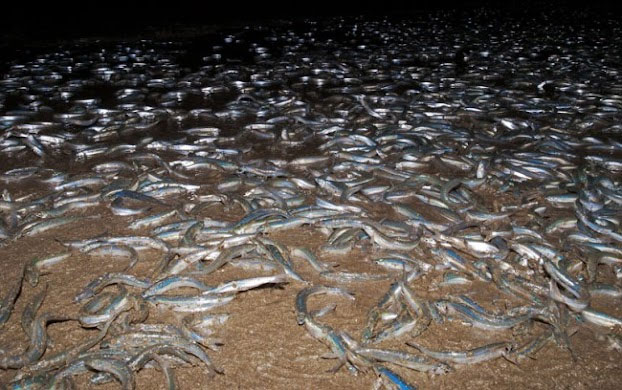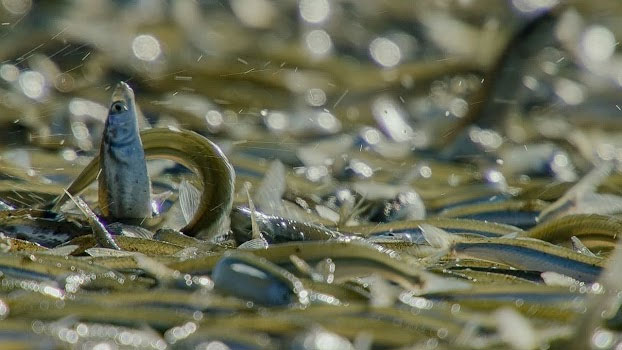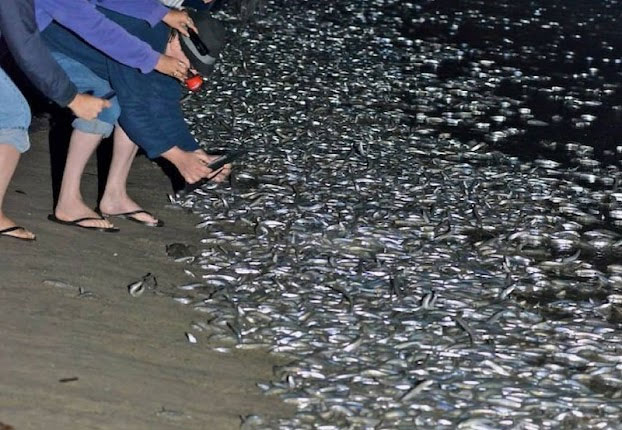When the tide rises, countless Grunion fish attempt to crawl ashore as if “committing suicide,” digging holes in the sand to lay their eggs.
In California, USA, there exists a unique species known as the Grunion fish. These tiny, silver-colored fish have an unusual mating habit. They often crawl out of the water to lay their eggs on the sand. This phenomenon occurs during high tide. If you’re lucky enough to be there at the right time, you might witness thousands of fish wriggling ashore under the moonlight.

This species has an unusual mating habit.
Grunion can be found along the Pacific beaches from Point Abreojos in Mexico to Santa Barbara in California. This species does not migrate; instead, they carefully choose a beach to spawn from March to August each year. The entire process is based on the tides. Grunions come ashore to lay eggs over four consecutive nights during the highest tides, coinciding with the full moon. The spawning process occurs after the tide rises and continues for several hours.
Typically, only one fish acts as a “scout” to check if the beach is suitable for spawning. If it is, the female fish will begin a “mating ritual” by twisting its body and digging the lower part of its body into the sand until it is half-buried. The female then lays her eggs in the sand hole. The male fish swim around and wrap themselves around the female, entwining their bodies to fertilize the eggs. When the waves crash onto the shore, the Grunions swim as far up the beach as possible. After spawning, most adult fish return to the ocean.

The female twists her body and digs into the sand until half of it is buried.
Adult Grunions can spawn multiple times in succession, with females capable of spawning up to six times each season. A female can lay up to 3,600 eggs during a single spawning event. The eggs are kept moist by water seeping through the sand. Lower tides a few days later help the eggs develop, while the sand protects them. The eggs hatch approximately nine days later when the next series of high tides sweeps over them, triggering the hatching process.
If simply watching the fish lay eggs isn’t thrilling enough, you can also catch these fish in California. The fishing season for tourists occurs in March, June, and July.

The population of Grunion is maintained at a fairly stable level.
Despite being hunted, the population of Grunion remains relatively stable. A more pressing issue is their loss of spawning habitat due to beach erosion, human construction of harbors, and pollution. Coastal development, such as seawall construction, can cause them to lose their spawning sites. Beach maintenance activities, such as using bulldozers or rakes, can destroy the nests of juvenile fish.


















































